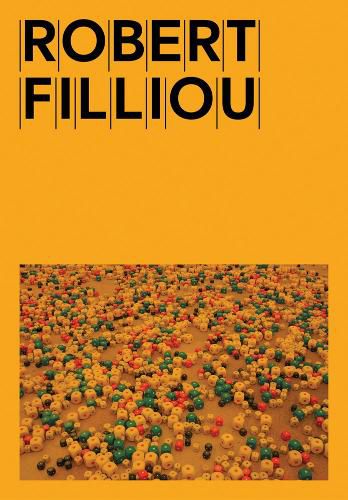Readings Newsletter
Become a Readings Member to make your shopping experience even easier.
Sign in or sign up for free!
You’re not far away from qualifying for FREE standard shipping within Australia
You’ve qualified for FREE standard shipping within Australia
The cart is loading…






Inside one of the final works of a Fluxus artist for whom artmaking was part of a permanent, endless process embedded in everyday life
This book showcases Eins. Un. One... (1984), one of the last major works of French American artist Robert Filliou (1926-87), which consists of 5,000 blue, red, yellow, black, white and wood-colored dice of various sizes, each with a single dot on its face, randomly distributed over a surface of nine meters in diameter. This new volume of the MAMCO Collection series contains an introductory text by Michel Collet, who explains the conceptual power of Filliou's practice, while Sophie Costes carefully surveys all the artist's works in the museum's collection. She shows how Filliou used play, action, philosophy and language to question the foundations of artistic creation with humor and benevolence. While Filliou rubbed shoulders with Joseph Beuys, George Brecht, John Cage, Allan Kaprow and Daniel Spoerri, he remained a discrete figure who wanted to abolish the arbitrary hierarchies established by art history.
$9.00 standard shipping within Australia
FREE standard shipping within Australia for orders over $100.00
Express & International shipping calculated at checkout
Stock availability can be subject to change without notice. We recommend calling the shop or contacting our online team to check availability of low stock items. Please see our Shopping Online page for more details.
Inside one of the final works of a Fluxus artist for whom artmaking was part of a permanent, endless process embedded in everyday life
This book showcases Eins. Un. One... (1984), one of the last major works of French American artist Robert Filliou (1926-87), which consists of 5,000 blue, red, yellow, black, white and wood-colored dice of various sizes, each with a single dot on its face, randomly distributed over a surface of nine meters in diameter. This new volume of the MAMCO Collection series contains an introductory text by Michel Collet, who explains the conceptual power of Filliou's practice, while Sophie Costes carefully surveys all the artist's works in the museum's collection. She shows how Filliou used play, action, philosophy and language to question the foundations of artistic creation with humor and benevolence. While Filliou rubbed shoulders with Joseph Beuys, George Brecht, John Cage, Allan Kaprow and Daniel Spoerri, he remained a discrete figure who wanted to abolish the arbitrary hierarchies established by art history.